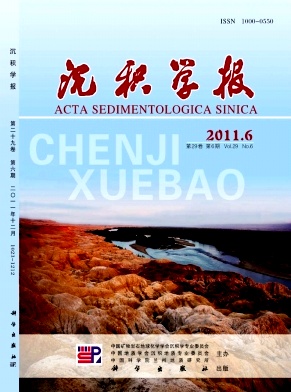Dolomitization in Deepwater Environment of Cambrian in Penecontemporaneous Diagenetic Stage, Eastern Tarim Basin
- Publish Date: 2011-12-10
-
Key words:
- /
- dolomicrites /
- deepwater /
- basin facies /
- ramp /
- penecontemporaneous diagenetic stage /
- dolomitization /
- /
- /
- /
Abstract: In the Cambrian formation of basin facies in the eastern Tarim Basin, thin bedded dolomicrites, argillaceous dolomicrites and siliceous dolomicrites are distributed in thick formations of silty mudstone, siliceous mudstone and silicalite. There is no obvious evidence of tideflat where evaporative pumping dolomicrites can be formed, like bird's eye structure, pores formed by gypsum disolution, cryptalgalaminite and mudcracks, while there are many evidence of deepwater environments, such as Radiolaria, colour of strong oxygenfree environment. As a result, the mechanism forming these dolomicrites can not be interpreted by evaporative pumping. Studies are carried on by petrologic characteristics, degree of order, isotope ratio of 13C ,18O and 87Sr/86Sr. Dolomicrites studied in this article appear in basin facies, composed by micrite dolomites, with mud intervals and siliceous metasomatism. In basin facies, the thickness of dolomicrites is small, while in ramp, they are distributed in dolomite with saccharoidal texture. Colour of cathodoluminescence of dolomicrites is maroon, which is characteristic of high quantity of Mn2+ and Fe2+, indicating that dolomicrites were formed in strong oxygenfree environment. Distribution range and average of degree of order of dolomite show that dolomicrites have lower value of degree of order than other dolomites. The average value of degree of order of dolomicrites is 0.749 8, with 48 samples, while that is 0.948 8(17 samples) of other dolomites, which means that dolomicrites were formed in relative short time. In deepwater environments, dolomicrites formed rapidly, there was no time to form big and euhedralgranular texture. Distribution range and average of δ13C and δ18O of dolomite shows that dolomicrites have higher value than other dolomites. The average value of δ13C of dolomicrites is 1.2, while that of finely crystalline dolomite is 0.4‰ and that of medium macrocrystalline dolomite is 0.6‰. The average value of δ18O of dolomicrites is 5.8‰, while that of finely crystalline dolomite is 8.8‰ and that of Medium macrocrystalline dolomite is 12.1‰. The characteristics of δ13C and δ18O show that dolomicrites were formed in circumstance with high salinity. The average value of 87Sr/86Sr of dolomicrites is 0.710 64, while that of finely crystalline and Medium macrocrystalline dolomite is 0.709 34, which is another evidence of circumstance with high salinity. Mechanism of dolomitization was proposed based on above evidences. Dolomicrites was formed in the period of restricted sea basin. When there was not sufficient supplement of freshwater into the sea and with strong evaporation, The salinity of seawater went high, with Mg2+ and Ca2+ concentrated. As a result, there is enough Mg2+ for dolomitization. For there were enough interspaces in the fluffy calcium carbonate sediments and seawater with high salinity can flows and stays sufficiently so that dolomitization occurred in penecontemporaneous diagenetic stage.
| Citation: | Dolomitization in Deepwater Environment of Cambrian in Penecontemporaneous Diagenetic Stage, Eastern Tarim Basin[J]. Acta Sedimentologica Sinica, 2011, 29(6): 1041-1047. |






 DownLoad:
DownLoad: